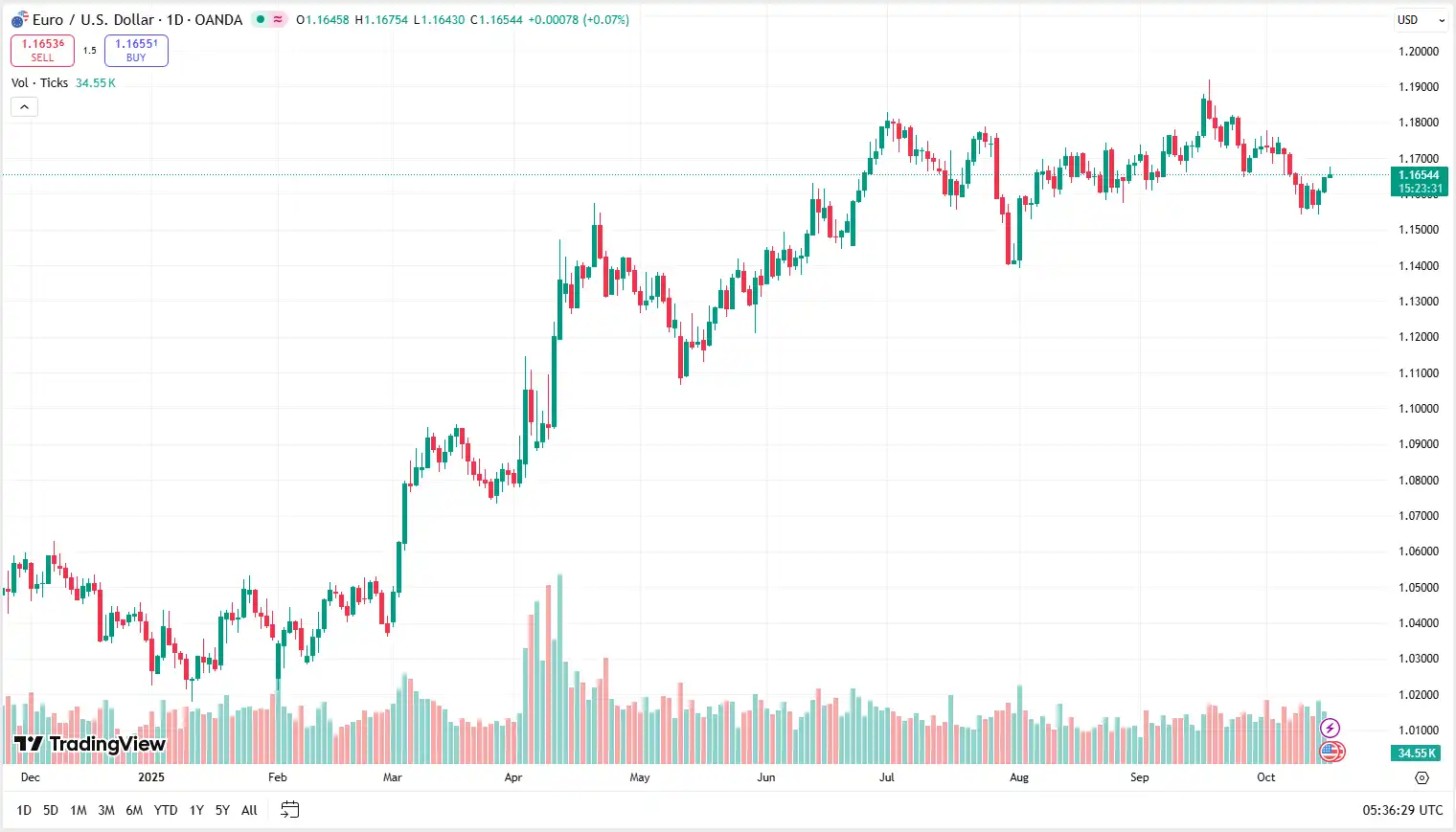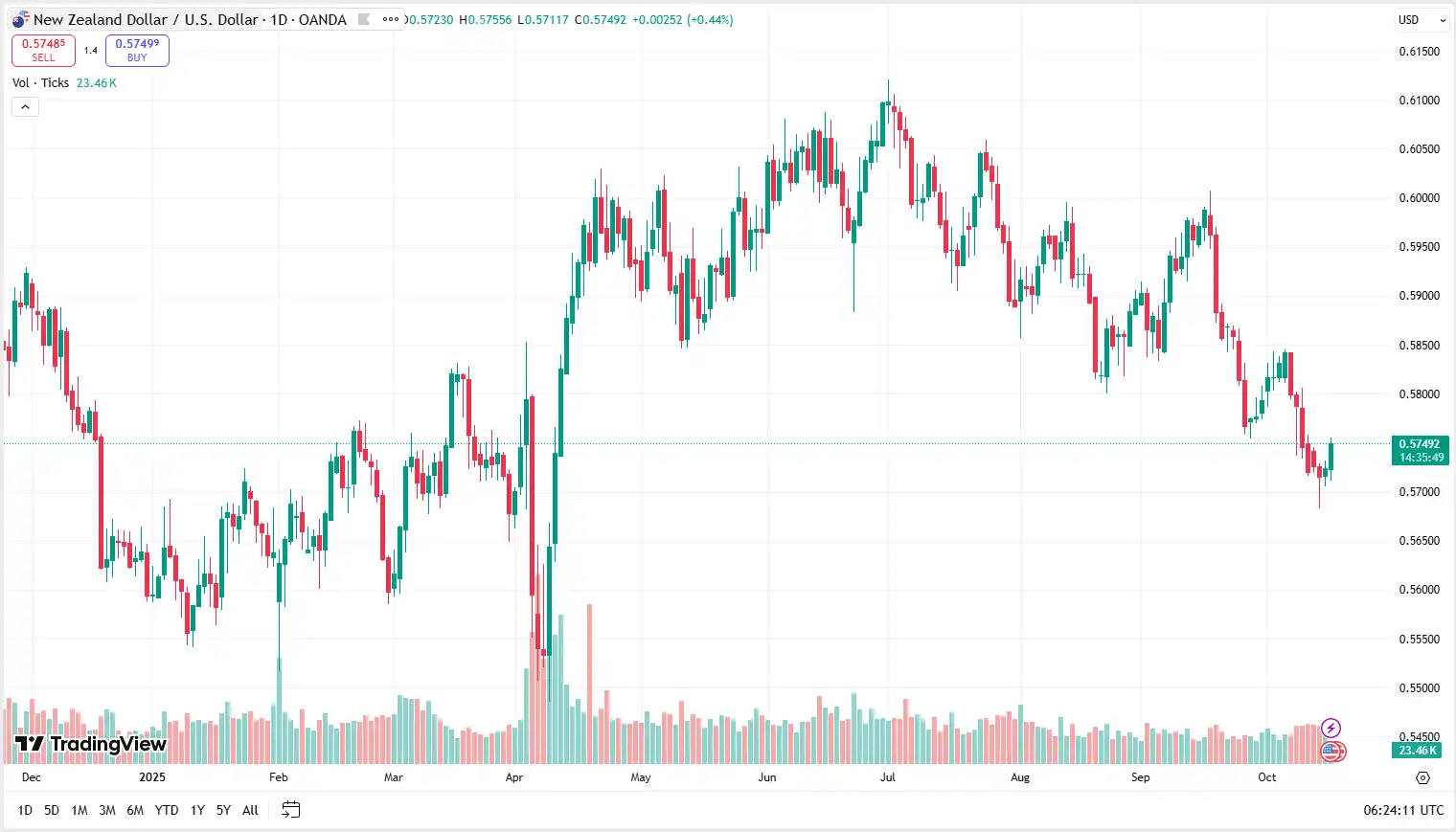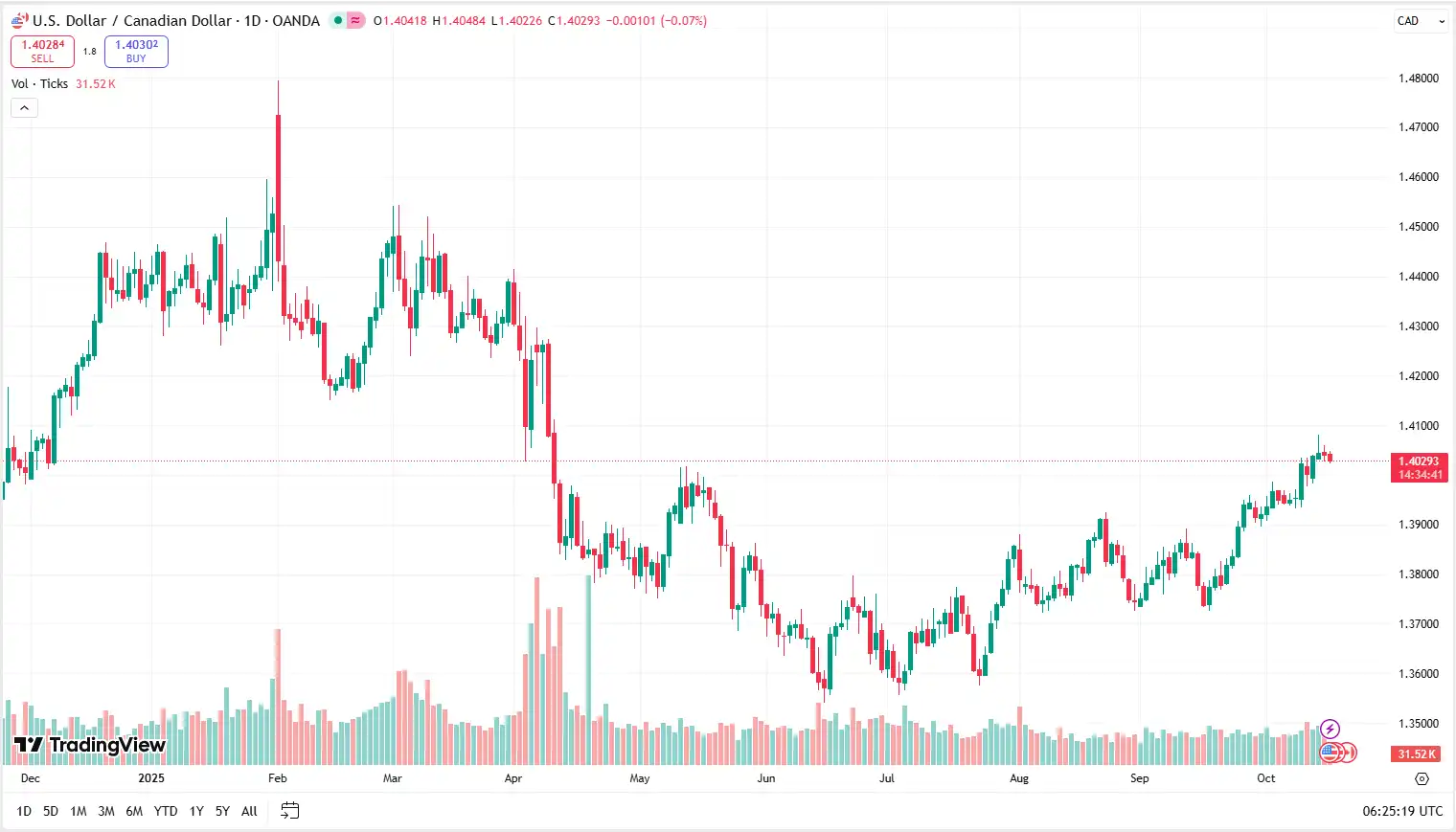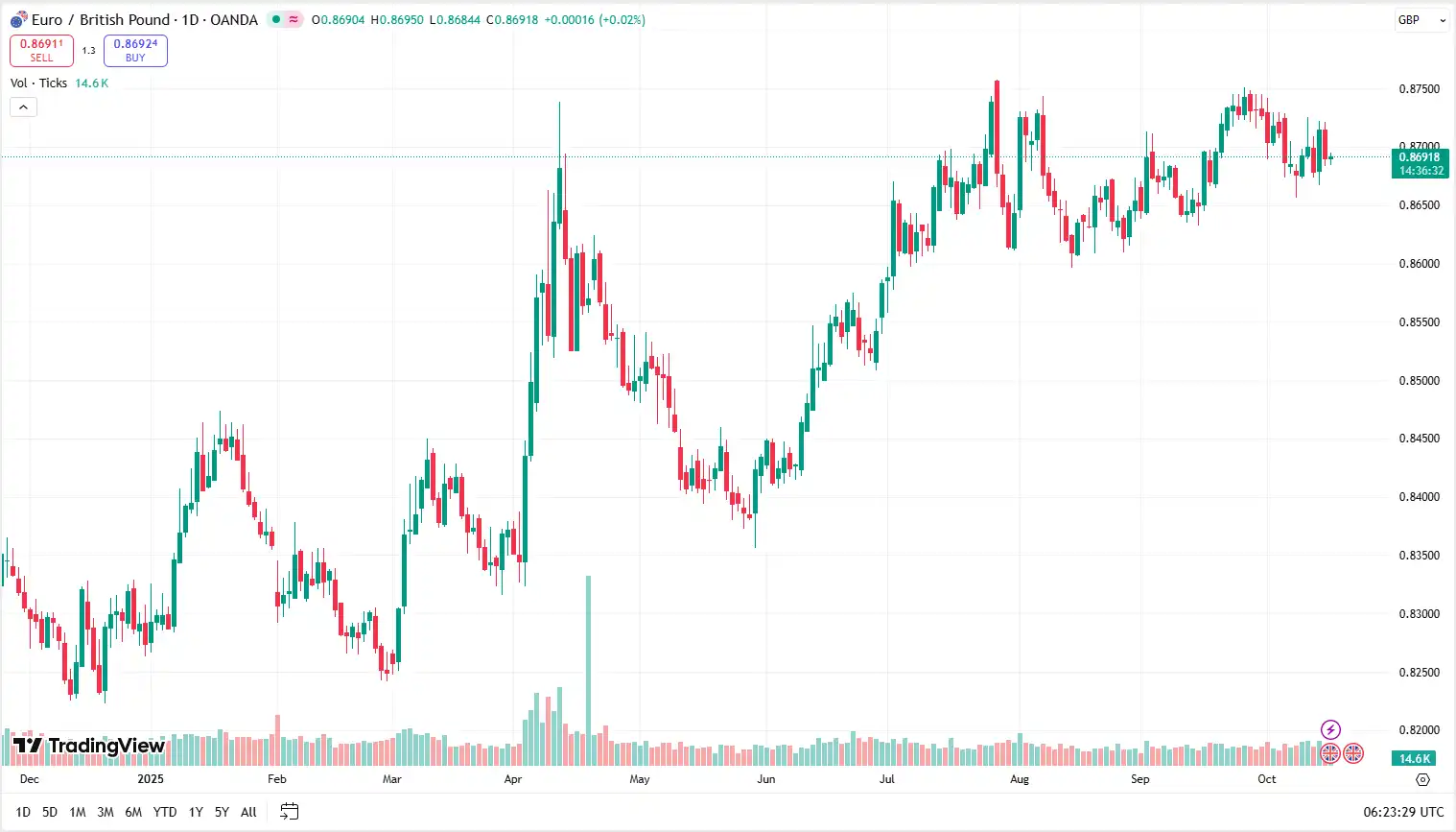The EUR/USD pair continued its upward trajectory for the third consecutive session and traded near 1.1670[1] in Thursday’s Asian hours. The advance of the pair is believed to be mainly due to relentless selling of the US dollar, with dovish expectations surrounding the policy of the Federal Reserve (Fed)[2] pressuring the greenback. The US Dollar Index (DXY)[3] is trading around 98.50, the lowest point in a week indicating weak demand for the currency due to the declining economic mood of the US.
Market observers[4] note that the market players are having strong hopes that the Fed will provide another 50 basis point cut in the rate by the end of the year, with the CME FedWatch Tool indicating a 94.6% chance that they will do so. This comes after the Fed Chair Jerome Powell[5] recognised the increasing downside risks to the US labour market, strengthening the argument that monetary easing is still on the agenda. These concerns have been enhanced by the weak labour data[6] in recent weeks which has further put more pressure on the yields and weakened the US dollar.
Market reports[7] indicate that the Euro has a weak support in the European front, despite the French political tensions subsiding. The move by Prime Minister Sebastian Lecornu[8] to suspend the controversial pension reform until after the 2027 elections has lessened the chances of government breakup and provided the Eurozone with short term political stability. Nevertheless, the economic conditions of the economy and the subdued growth potentials keep limiting the upside of the currency.
Analysts[9] indicate that in future, traders will pay attention to future US jobless claims and US housing figures later this week to get new indications on the wellbeing of the labour market. A less-than-anticipated result would strengthen dovish Fed[10] speculation, which would justify short-term EUR/USD profits. Nonetheless, there are medium-term risks because the world trades are already feeling tensions and uncertainty of the Eurozone growth may restrain further appreciation above the 1.1700[11] resistance level.

NZD/USD Rebounds as Dollar Weakens Amid Uncertainty
The NZD/USD pair regained some ground and traded around 0.5740[12] in Thursday's Asian session, snapping a seven-day losing streak. The rebound is thought to be happening as the US dollar weakens marginally under the pressure of the impending concerns about the prevailing US government shutdown[13] which is already in its third week. A U.S Treasury official estimated that the shutdown may cost the economy about 15 billion[14] a week, as it spoiled the mood of the Greenback, and even provided short-term assistance to risk-treated currencies such as the New Zealand dollar.
Market observers[15] point out that the market participant switched their interest to the next policy actions of the Fed with traders now setting the odds at 98% of a 25-basis-point cut in October and a subsequent one in December. Monetary easing expectations have restrained the yield of the US Treasuries, which is a burden to the Dollar Index (DXY)[16]. Meanwhile, the US has been recording soft data in recent times especially in the manufacturing and consumer confidence[17] sectors that have helped to affirm the fact that economic momentum is decelerating and this may exert further pressure on the dollar should data on retail sales or jobless claims turn out to be dismal.
Market commentators[18] point out that the overall market mood is still weak in the face of new trading tensions between the US and China. The threat of 100% tariffs by the US President Trump[19] on Chinese imports has brought back the threat of a trade war, which usually has a negative impact on the Kiwi as a Chinese proxy. The possibilities of any weakening of relationships between the US and China might restrict the upswing of NZD/USD in the upcoming sessions.
Technically, analysts[20] indicate that resistance is observed close to 0.5775, and support is observed close to the 0.5700 psychological level. Short-term bids may suit the couple since USD introspection will be reserved, although the long-term risks are prevalent and the US political uncertainty and global trading issues will probably limit long-term Kiwi gains[21].

USD/CAD Weakens as Oil Strength Caps Dollar
USD/CAD extended its decline for the second consecutive session and traded near 1.4030[22] in Thursday’s Asian hours. The pair is believed to still be under downward pressure, with the US dollar weakening under fresh market caution and the growing US-China[23] trade threats. The statements of the US President Donald Trump[24] that said the situation was a trade war with China only enhanced the anxieties of investors, even though Treasury Secretary Scott Besset proposed a tariff freeze to relieve frictions over crucial minerals.
Market commentators[25] point out that the downfall of the greenback was further aggravated by the dovish statements by the Fed Chair Jerome Powell who assured that Fed is still on the path of reducing the rate by another 25 basis points later this month. Powell referred to low hiring and a decelerating economy, worsened by the continuing government shutdown that hindered economic visibility. The CME FedWatchTool shows that the markets expect a 98% chance of a 93% chance of another cut in October and December[26] respectively which is likely to push the demand of the US dollar significantly.
Market reports[27] point out that the Canadian dollar was supported by stronger crude oil prices, as the WTI was at around 58.30 per barrel. The oil sentiment rose following the announcement of Indian Prime Minister Narendra Modi[28] vowing to stop the purchase of Russian oil, which has the potential to restrict the world supply. Considering that Canada is a key exporter of oil to the US, the impact of the increased energy prices on the demand of the Canadian dollar[29] helped fuel its negative trend against the US dollar, and increased the pressure of the lateral.
Analysts[30] indicate that in the future, traders will be examining the future data on US retail sales and industrial production to get additional information on the health of the economy. Less-than-anticipated figures have the potential to support the anticipation of prolonged Fed easing, continuing to push USD/CAD[31] pair near term, but long term risks may be present should trade tensions escalate or if oil price gains prove to be temporary.

EUR/GBP Steadies as Traders Await Key Data
EUR/GBP shifted slightly and traded near 0.8690[32] in Thursday’s Asian session, after modest losses in the previous session. The dull sound of the pair is believed to be a precautionary tone of traders awaiting for the expected release of the United Kingdom’s Gross Domestic Product (GDP)[33] and Industrial Production figures in the month of August. Both indicators are projected to record slight growth, with GDP projected to grow 0.1% MoM and Industrial Production projected to grow 0.2% MoM and thus there is not a lot of growth impetus in the UK economy[34].
Market reports[35] indicate that the sterling has continued to be pressured as more and more people anticipate a dovish shift in the Bank of England (BoE). Recent UK labour market statistics[36] indicated an additional relaxation of the labour market and markets started to price in close to 46 bps of rate cuts prior to the year end. This has limited recent GBP gains and could expose the pound to disappointment in the event that future domestic data are not good. Contrastingly, the Euro is supported near term by the wary European Central Bank (ECB)[37] commentary, and a central bank Governor of Slovenia, Primo Dolenc stated that he would prefer to maintain the same rates until new shocks occur- solidifying a stable policy perspective.
Market reports[38] point out that the political events in the Euro zone have also been mildly supportive to the single currency. The possibility of French Prime Minister Sebastien Lecornu[39] surviving a no-confidence vote has relieved the markets of doubt, and the fact that the pension reforms are suspended may calm investor feelings towards France.
Analysts[40] indicate that traders are set to monitor the upcoming US economic data, such as the inflation and retail sales rates, in a wider risk sentiment reading in the future. Poorer US data may press on risk-taking around the world, indirectly benefiting EUR/GBP[41] as it would push investors to lower-volatility investments. At the short-run, the pair[42] can be held at a level above 0.8670, and the resistance will be at 0.8720 but Eurozone growth momentum will pose a threat to the Euro in the long run.

Stay Ahead in the Currency Game
Whether you're a daily FX trader or handle international transactions regularly, our 'Currency Pulse' newsletter delivers the news you need to make more informed decisions. Receive concise updates and in-depth insights directly in your LinkedIn feed.
Subscribe to 'Currency Pulse' now and never miss a beat in the currency markets!
Ready to act on today’s insights? Get a free quote or give us a call on: +44 (0)20 7740 0000 to connect with a dedicated portfolio manager for tailored support.
Important Disclaimer: This blog is for informational purposes only and should not be considered financial advice. Currency Solutions does not take into account the investment objectives, financial situation, or specific needs of any individual readers. We do not endorse or recommend any specific financial strategies, products, or services mentioned in this content. All information is provided “as is” without any representations or warranties, express or implied, regarding its accuracy, completeness, or timeliness.




